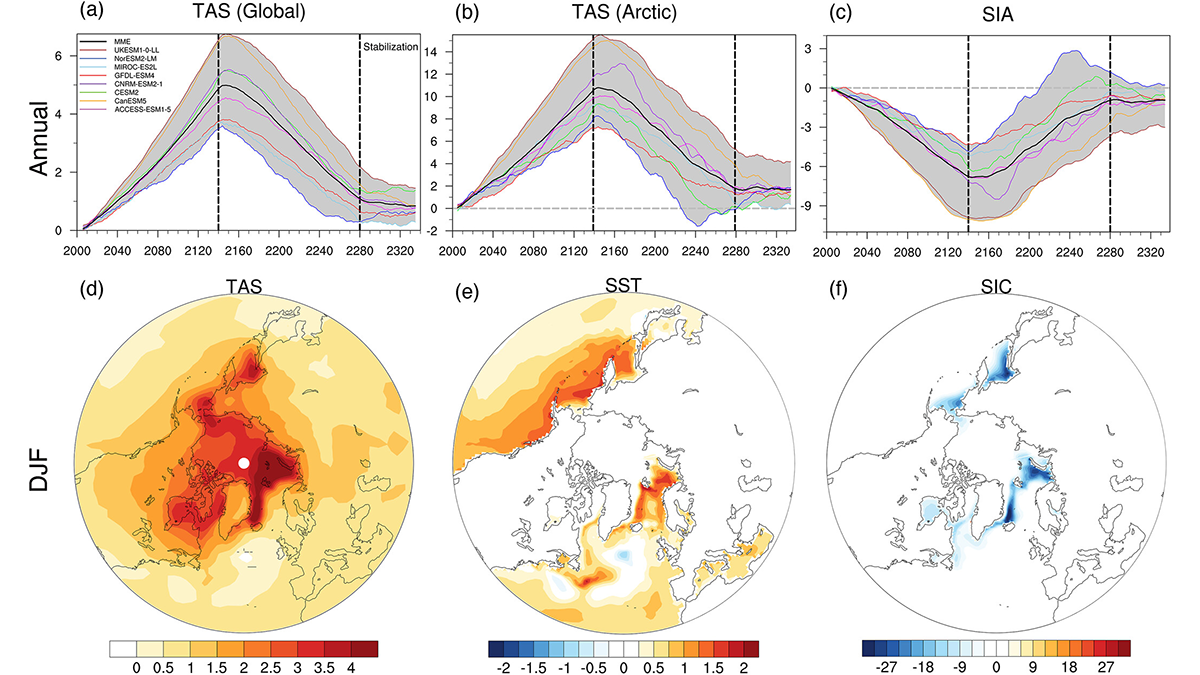Editors’ Highlights are summaries of recent papers by AGU’s journal editors.
Source: Geophysical Research Letters
A translation of this article was made by Wiley. 本文由Wiley提供翻译稿。
The location of the North Atlantic winter jet signals how the large-scale atmospheric circulation over the basin and surrounding continents are organized, directly impacting weather, including extreme events. Thus, it is important to understand the competing physical mechanisms determining jet shifts under climate change. Key drivers are the degree of excess warming in the Arctic compared to other regions (Arctic Amplification), the degree of cooling (or less warming) sea surface temperatures in the subpolar North Atlantic compared to other regions (strongly related to ocean circulation), and the effect of weather noise in the subpolar to midlatitude North Atlantic on the underlying ocean (atmospheric feedback onto the ocean).
Yu et al. [2025] examine whether Arctic sea ice returns to its preindustrial state after carbon dioxide removal, analyzing a 60-year period after reaching preindustrial carbon dioxide levels in a multi-model experiment. They find that most models are left with a deficit in annual-mean sea ice area of about 1 million square kilometers and equatorward shifted jets. Drawing on results from another multi-model experiment, which is focused on separating the effects of Arctic sea ice loss versus global sea surface temperature warming in inducing climate response, they attribute the equatorward shift in the winter jets (compared to preindustrial conditions) to the reduced sea ice area. The shift is weaker over the North Atlantic basin, yet there are striking associations in the shift with the different drivers. This highlights the importance of examining the different physical processes at play in the region in dedicated model experiments and especially examining the interactions between the processes under climate change.
Citation: Yu, H., Screen, J. A., Xu, M., Hay, S., Qiu, W., & Catto, J. L. (2025). Incomplete Arctic sea‐ice recovery under CO2 removal and its effects on the winter atmospheric circulation. Geophysical Research Letters, 52, e2024GL113541. https://doi.org/10.1029/2024GL113541
—Gudrun Magnusdottir, Editor, Geophysical Research Letters

